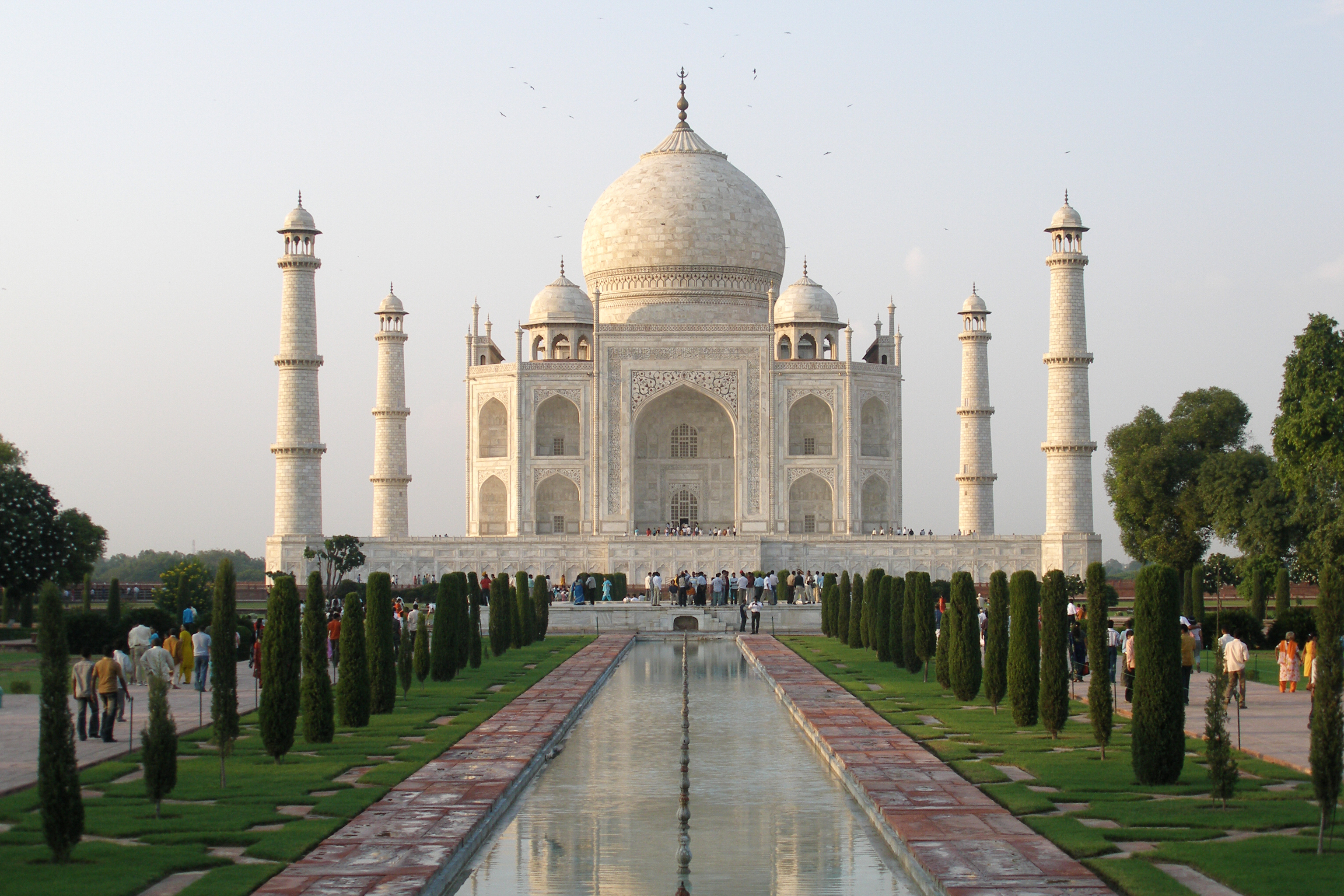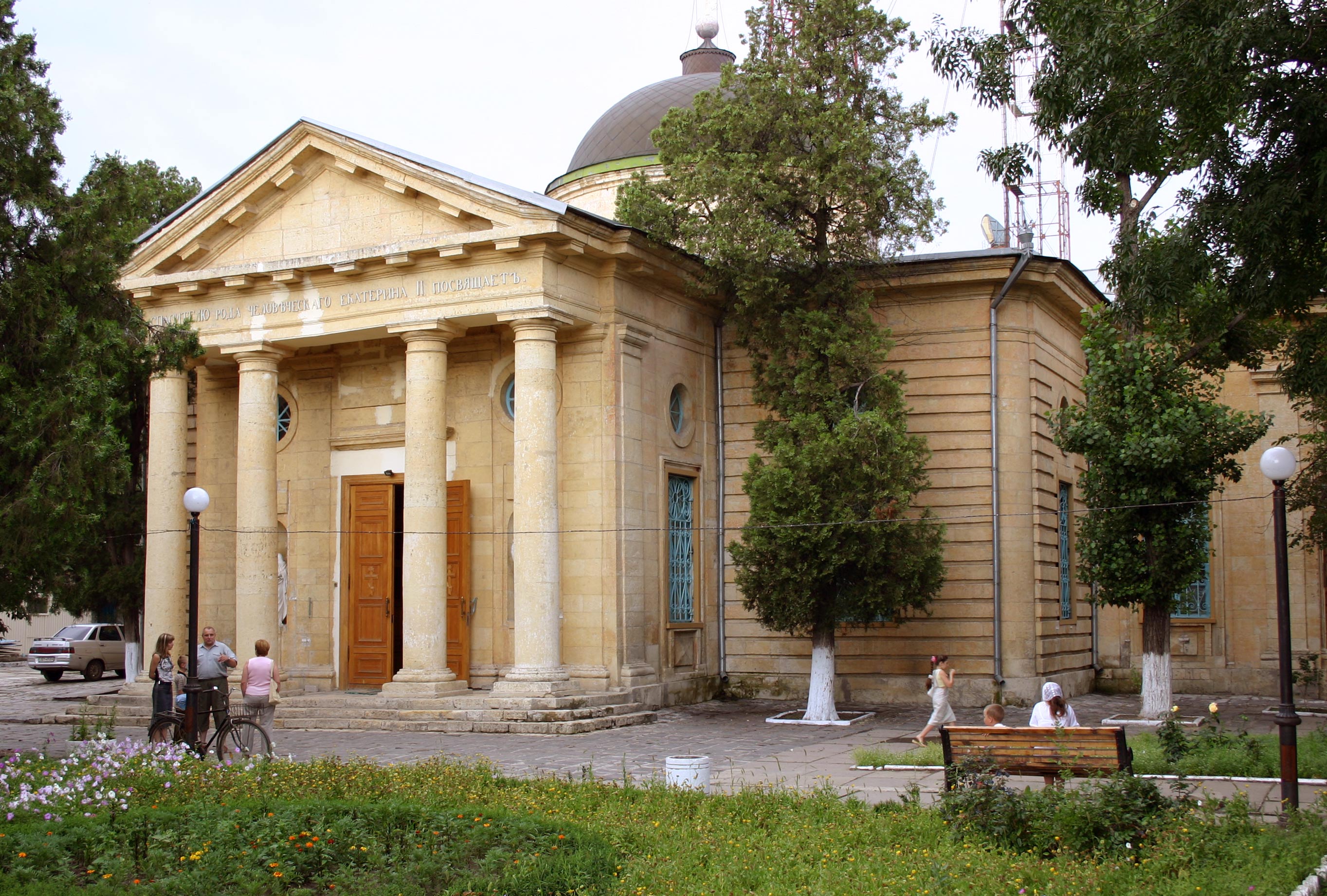|
1706 In Architecture
The year 1706 in architecture involved some significant events. Buildings and structures Buildings * The dome of Les Invalides in Paris, France is completed. * Ljubljana Cathedral, largely designed by Andrea Pozzo, is completed. * Dominican Church and Convent of Assumption of Mary in Tarnobrzeg, Poland, is rebuilt. * Church of St George the Martyr, Holborn, London, designed by Arthur Tooley, is completed. * Yeni-Kale Ottoman Turkish fortress in the Crimea is completed under the guidance of Goloppo. Births * March 4 – Lauritz de Thurah, Danish architect (died 1759 in architecture, 1759) * August 28 – Jan Bouman, Dutch architect working in Potsdam (died 1776 in architecture, 1776) * Mateus Vicente de Oliveira, Portuguese architect (died 1786 in architecture, 1786) * Thomas Gilbert (architect), Thomas Gilbert, English architect (died 1776 in architecture, 1776) Deaths * October? – Martin Grünberg, Prussian architect (born c.1655 in architecture, 1655) * Approximate date ... [...More Info...] [...Related Items...] OR: [Wikipedia] [Google] [Baidu] |
Jan Bouman
Jan Bouman (28 August 1706, in Amsterdam – 6 September 1776, in Berlin) was a Dutch architect, mainly notable for his work as designer and general contractor on the Dutch Quarter in Potsdam by order of Frederick William I of Prussia. He designed its canals and squares along with Potsdam's Berlin Gate and town hall, the latter influenced by the Royal Palace of Amsterdam The Royal Palace of Amsterdam in Amsterdam (Dutch: ''Koninklijk Paleis van Amsterdam'' or ) is one of three palaces in the Netherlands which are at the disposal of the monarch by Act of Parliament. It is situated on the west side of Dam Square i .... External links *https://rkd.nl/nl/explore/artists/333640 18th-century Dutch architects 1706 births 1776 deaths Architects from Amsterdam 18th-century Dutch artists {{Netherlands-architect-stub ... [...More Info...] [...Related Items...] OR: [Wikipedia] [Google] [Baidu] |
1706 Works
Seventeen or 17 may refer to: *17 (number), the natural number following 16 and preceding 18 * one of the years 17 BC, AD 17, 1917, 2017 Literature Magazines * ''Seventeen'' (American magazine), an American magazine * ''Seventeen'' (Japanese magazine), a Japanese magazine Novels * ''Seventeen'' (Tarkington novel), a 1916 novel by Booth Tarkington *''Seventeen'' (''Sebuntiin''), a 1961 novel by Kenzaburō Ōe * ''Seventeen'' (Serafin novel), a 2004 novel by Shan Serafin Stage and screen Film * ''Seventeen'' (1916 film), an American silent comedy film *''Number Seventeen'', a 1932 film directed by Alfred Hitchcock * ''Seventeen'' (1940 film), an American comedy film *''Eric Soya's '17''' (Danish: ''Sytten''), a 1965 Danish comedy film * ''Seventeen'' (1985 film), a documentary film * ''17 Again'' (film), a 2009 film whose working title was ''17'' * ''Seventeen'' (2019 film), a Spanish drama film Television * ''Seventeen'' (TV drama), a 1994 UK dramatic short starring Christien ... [...More Info...] [...Related Items...] OR: [Wikipedia] [Google] [Baidu] |
1632 In Architecture
__TOC__ Buildings and structures Buildings * 1630s – Tomb of Ali Mardan Khan in Lahore is built. * 1630–1631 – Church of San Caio in Rome rebuilt by Francesco Peparelli and Vincenzo della Greca. * 1630–1635 – The Pearl Mosque at Lahore Fort is built. * 1631 – Work starts on the basilica of Santa Maria della Salute in Venice, designed by Baldassare Longhena. * 1632 ** College chapel of Peterhouse, Cambridge, England, is consecrated. ** Work starts on the Taj Mahal, probably designed by Ustad Ahmad Lahauri. * 1633 ** Completion of the Palazzo Barberini in Rome by Gian Lorenzo Bernini (begun 1627 by Maderno). ** Reconstruction of the Great Synagogue of Vilna completed. ** Completion of St Columb's Cathedral, Derry, Ireland, designed by William Parrott, the first post-Reformation Anglican cathedral built in the British Isles and the first Protestant cathedral built in Europe. ** St Paul's, Covent Garden, designed by Inigo Jones, opened to worsh ... [...More Info...] [...Related Items...] OR: [Wikipedia] [Google] [Baidu] |
Tylman Van Gameren
Tylman van Gameren, also ''Tilman'' or ''Tielman'' and Tylman Gamerski, (Utrecht, 3 July 1632 – c. 1706, Warsaw) was a Dutch-born Polish architect and engineer who, at the age of 28, settled in Poland and worked for Queen Marie Casimire, wife of Poland's King John III Sobieski. Tylman left behind a lifelong legacy of buildings that are regarded as gems of Polish Baroque architecture. Life and professional career Tylman was born in Utrecht, the Netherlands, and was trained by Jacob van Campen whilst the latter was busy building the Stadhuis on the Dam. Like many Dutch artists at the height of the Dutch Golden Age, Tylman left for Italy in 1650. While in Venice, he earned the reputation as a highly skilled painter of battle scenes. In 1660, Tylman met in Leiden the Polish prince Jerzy Sebastian Lubomirski, the Grand Crown Marshall of the Polish–Lithuanian Commonwealth, and accepted his invitation to come to Poland as his architect and military engineer. Once in Wars ... [...More Info...] [...Related Items...] OR: [Wikipedia] [Google] [Baidu] |
1655 In Architecture
__TOC__ Buildings and structures Buildings * 1650 ** The Marian column in Prague is erected (destroyed 1918). ** Talar Ashraf palace in Isfahan, Persia, is built. ** ''(approximate date)'' The Khaju Bridge in Isfahan is built. * 1651 ** Collegiate Church of Saint Magdalena and Saint Stanisław in Poznań (Poland) is started (completed c.1701). ** '' Karamon'' of Ueno Tōshō-gū shrine in Tokyo is built. * 1652 – Church of the Resurrection, Kostroma. * 1653 ** The Taj Mahal mausoleum at Agra in India (begun in 1630 and probably designed by Ustad Ahmad Lahauri) is completed. ** The Radziwiłł Palace, Vilnius, is completed. * 1654 – Construction of Skokloster Castle in Sweden to the design of Caspar Vogel begins (completed 1676). * 1656 ** The Jama Masjid, Delhi, is completed. ** The colonnade of St. Peter's Basilica in Rome is started by Gian Lorenzo Bernini. * 1658 ** Terraced houses at 52–55 Newington Green in London, perhaps by Thomas Pidcock, are completed. ** ... [...More Info...] [...Related Items...] OR: [Wikipedia] [Google] [Baidu] |
Martin Grünberg
Martin Grünberg (born 1655, Insterburg, then in East Prussia, now in Russia – between 16 and 23 October 1706 or 1707Precise date of death unknown) was a German architect and master builder. Life He was active in Berlin from 1687 onwards, after several trips to France and Italy. In Berlin he took part in the construction of the Friedrichstadt and oversaw the construction in the Kurmark alongside the Electorate of Brandenburg's head architect Johann Arnold Nering, who he succeeded from 1695 to 1698, when he again became the head-architect's subordinate. These works included the building of the Schloss and Residenz buildings. Like Nering he was a representative of the Dutch Baroque style. His other designs include the Marstallgebäudes on the Unter den Linden as far as the later Dorotheenstraße (including the first Berlin Observatory), the Jungfernbrücke (formerly known as the Spreegassenbrücke) and the Sebastiankirche (later known as the Luisenstädtische Kirche). On occas ... [...More Info...] [...Related Items...] OR: [Wikipedia] [Google] [Baidu] |
Thomas Gilbert (architect)
Thomas Gilbert was a British architect who lived from 1706 to 1776. He is best known for designing and building St. George's Church on the Isle of Portland. His architectural design, which he applied to the Church, came from Christopher Wren Sir Christopher Wren PRS FRS (; – ) was one of the most highly acclaimed English architects in history, as well as an anatomist, astronomer, geometer, and mathematician-physicist. He was accorded responsibility for rebuilding 52 churches .... When he died Thomas Gilbert was buried beneath St George's Church altar. References 1706 births 1776 deaths British ecclesiastical architects {{UK-architect-stub ... [...More Info...] [...Related Items...] OR: [Wikipedia] [Google] [Baidu] |
1786 In Architecture
The year 1786 in architecture involved some significant architectural events and new buildings. Buildings and structures Buildings completed *Casa de Esteban de Luca, Buenos Aires, Argentina. *Golghar, Patna, India, built by Captain John Garstin. *Henley Bridge, designed by William Hayward (bridge designer), William Hayward of Shrewsbury, who died before construction was completed. *Schloss Bellevue in Berlin, Germany, designed by Michael Philipp Boumann. *St. Catherine's Cathedral, Kherson, Ukraine, built by General Ivan Gannibal.http://russian-church.ru/viewpage.php?cat=kherson&page=7 Russian Church (Russian)]. Accessed 11 December 2013. Awards * Grand Prix de Rome, architecture: Charles Percier. Births *January 23 – Auguste de Montferrand, French Neoclassical architect who worked primarily in Russia (died 1858 in architecture, 1858) *May 7 – John Watts (military architect), John Watts, Irish military architect (died 1873 in architecture, 1873) Deaths *February 28 – ... [...More Info...] [...Related Items...] OR: [Wikipedia] [Google] [Baidu] |
Mateus Vicente De Oliveira
Mateus Vicente de Oliveira (1706–1786) was a Portuguese architect. He studied under the architects João Frederico Ludovice and Jean Baptiste Robillon during the construction of the royal palace at Mafra - Portugal's attempt to rival the Spanish king's palace at Escorial. Oliveira worked chiefly in the late Baroque and rococo styles of architecture. While he is best remembered for his design of the Palace of Queluz, on which he worked from 1742 to 1758, he also worked on many other projects. In 1779 he began work on the Basílica da Estrela in Lisbon; this church was incomplete at the time of de Oliveira's death and work continued under the direction of Reinaldo Manuel. While Manuel was responsible for much of the classical detail of the church's exterior, the blueprint of the church is credited to de Oliveira.Star Basílica Notes References * Fielding, Xan. (Queluz - pages 275 – 279) ''Great Houses of Europe''. Edited by Sacheveral Sitwell. 1961. Weidenfeld an ... [...More Info...] [...Related Items...] OR: [Wikipedia] [Google] [Baidu] |
1776 In Architecture
The year 1776 in architecture involved some significant events. Buildings and structures Buildings * The Landhaus (Dresden), designed by Friedrich August Krubsacius, is completed. * City Hall, Weesp in the Netherlands, designed by Jacob Otten Husly with Leendert Viervant the Younger, is completed. * Rauma Old Town Hall in Finland, designed by Christian Friedrich Schröder, is built. * Hôtel du Châtelet town house in Paris, designed by Mathurin Cherpitel, is built. * Château Malou near Brussels in the Austrian Netherlands is built. * Curtea Nouă palace in Bucharest, Principality of Wallachia, is completed. * New Wardour Castle in Wiltshire, England, designed by James Paine, is built to replace the ruined Wardour Castle. * Woolverstone Hall in Suffolk, England, designed by John Johnson, is built. * The Wenyuan Chamber, an imperial library in the Forbidden City of Beijing, is built. * The Palazzi di S. Apollinare in Rome is extended by Pietro Camporese il Vecchio and Pasq ... [...More Info...] [...Related Items...] OR: [Wikipedia] [Google] [Baidu] |
Potsdam
Potsdam () is the capital and, with around 183,000 inhabitants, largest city of the German state of Brandenburg. It is part of the Berlin/Brandenburg Metropolitan Region. Potsdam sits on the River Havel, a tributary of the Elbe, downstream of Berlin, and lies embedded in a hilly morainic landscape dotted with many lakes, around 20 of which are located within Potsdam's city limits. It lies some southwest of Berlin's city centre. The name of the city and of many of its boroughs are of Slavic origin. Potsdam was a residence of the Prussian kings and the German Kaiser until 1918. Its planning embodied ideas of the Age of Enlightenment: through a careful balance of architecture and landscape, Potsdam was intended as "a picturesque, pastoral dream" which would remind its residents of their relationship with nature and reason. The city, which is over 1000 years old, is widely known for its palaces, its lakes, and its overall historical and cultural significance. Landmarks include ... [...More Info...] [...Related Items...] OR: [Wikipedia] [Google] [Baidu] |





.jpg)
